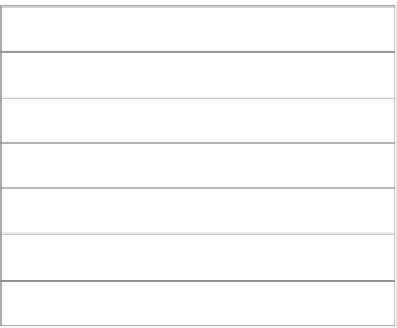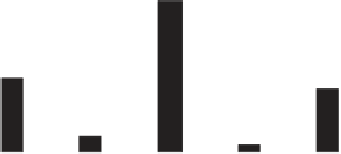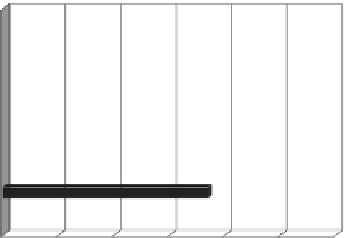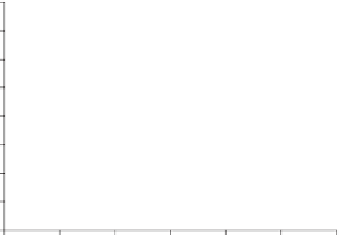Agriculture Reference
In-Depth Information
Dressing Percentages of Goats Fed
Different Diets
Average Daily Gain of Bucks vs. Wethers
350
Buck
Wether
300
80/20
Ryegrass
250
60/40
200
50/50
Browse
150
30/70
Bahiagrass
100
50
0
10
20
30
40
50
60
Dressing Percentage
0
Figure 10.5
Dressing percentages of growing
goats (BW = 35-40 kg) fed different diets or
various levels of concentrate : hay ratio.
Weeks on Ryegrass
Figure 10.4
Period and total daily gain of bucks
versus wethers grazing ryegrass pastures over
an 8-week period. Source: Solaiman et al., 2006.
in lactation when the animal is in negative energy balance.
Milk production by dairy goats generally peaks at 6-8
weeks of lactation (Figure 10.6) while intake of feed and
energy peaks at 3-4 months into lactation. During this
period, the lactating doe relies on body reserves to produce
milk, and generally is in a ketotic condition. Animals often
lose 0.5-1 kg of body weight per week for the fi rst 2
months in lactation, but starting at 4 months in lactation,
they should gain weight (1-2 kg per month) to restore the
tissues lost during early lactation. Lactating does should
be fed according to their requirements for milk production
(Appendix A). Nutrient composition of a complete mixed
dairy ration is presented in Table 10.11. Adding fat at
3-4% of diet DM can increase energy density of the diet
to help meet the needs for early lactation and allow feeding
forage to promote optimum milk fat synthesis. However,
higher levels of fat will reduce fi ber digestion and calcium
absorption. A higher protein level also is required in early
lactation for microbial protein synthesis, and additional
rumen by-pass protein will help provide the amino acids
necessary for milk synthesis as well as glucogenic amino
acids for lactose production. Some suggested maximum
limits for ingredients in diets for dairy goats are presented
in Table 10.12 .
The ideal environmental temperature for milk produc-
tion is between 5 and 25°C. A temperature-heat index
(THI) higher than 72 reduces DM intake by 10-12% and
growth, reduce average daily gain, and increase the time
needed for goats to reach market weight. Premature castra-
tion also increases the incidence of urinary calculi by
reducing the development of the urinary tract. Intact buck
kids gain 20-30% more weight than castrated wether kids.
If kids are slaughtered at 6 months of age or less for meat,
and provided bucks are separated from does, castration can
be skipped so that bucks will gain weight more rapidly.
However, success in raising intact bucks for meat will
depend on the management skills and practices on an indi-
vidual farm.
Lightweight goats that are in poor condition or that have
been transported a long distance can be reconditioned
through a controlled grazing scheme without or with a
limited amount of grain. Goats fed concentrate diets will
have higher dressing percentages at slaughter largely
because their carcasses tend to contain a higher percentage
of body fat and more muscle but a smaller digestive tract
with less digesta (Figure 10.5 ).
Feeding for Milk Production
Management is challenged to maintain health and maxi-
mize milk production of lactating does, particularly early



















